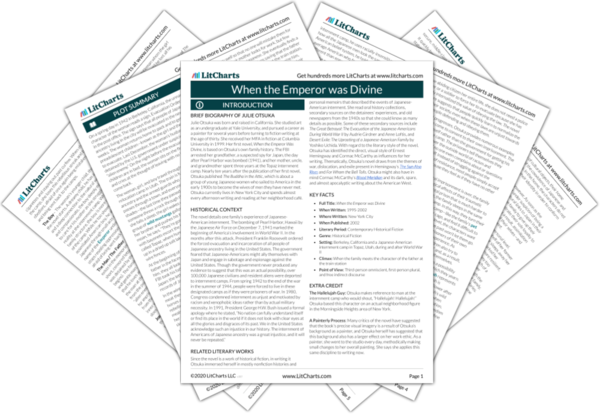In a novel rife with symbols, trees are perhaps the most recurring one. On the most basic level, trees represent home, one’s roots in the ground. On the evening before the family is relocated, the woman plucks a leaf from their tree in the backyard, as if taking with her a memento of home before she leaves for an unknown period of time. The trees then begin to take on more symbolic significance when characters throughout the novel—including minor characters like Teizo “Ted” Ishimoto—feel shocked at the total absence of trees at the camps. For them, the lack of trees is a clear sign that the camp will never be “home.” Trees are stable and require deep roots to live, but the camp is merely a temporary dwelling place, rather than a home, for the duration of the war. When the army actually tries to plant trees at the camp, they all die, illustrating the incompatibility of home with internment. With the trees dead, the army instead puts up street signs named after trees in a vain, superficial attempt to make the camp seem more like home. But the internment camp is only a real home inasmuch as the “Oak Street” sign is a real tree.
Trees Quotes in When the Emperor was Divine
Several days later, the street signs appeared. Suddenly there was an Elm Street, a Willow Street, a Cottonwood way… “It doesn’t look like we’ll be leaving here any time soon,” said the boy’s mother.
“At least we know where we are,” said the girl.















